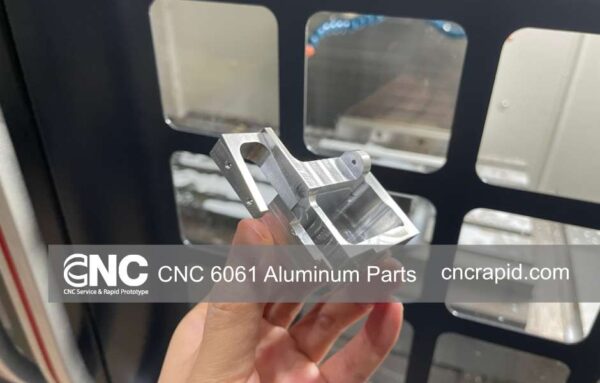Modern electronic enclosures, lightweight gearboxes, and heat-dissipating housings often rely on slanted or compound-angle passages for wire routing, oil flow, or fastener access. Machining those angled holes in aluminum—while holding both position and surface-finish requirements—demands a different playbook from straight drilling. This article explains why these features matter, the challenges they raise, and how we at CNC Rapid tackle them day-to-day on 3-axis equipment.
Why Designers Specify Angled Holes
- Weight and envelope savings —A slanted bore reaches an internal cavity without adding a bulky boss or flange.
- Fluid & cable routing —Angled oil galleries, air lines, and sensor cables can bypass critical load-bearing ribs.
- Fastener access —Countersunk screws inserted on a 20°–30° path clear tall heat-sink fins, keeping the exterior sleek.
- Assembly ergonomics —Compound-angle dowel pins allow one-step alignment of multi-component frames.

Machining Challenges Unique to Angled Holes
| Challenge | Why It Happens | Consequence |
| Tool deflection | The drill meets the surface at < 90°; cutting forces push sideways | Oversized or tapered bore |
| Chip evacuation | Gravity no longer helps chips fall out | Chips scar the wall or break the tool |
| Entry burrs | Skewed entry edge tears instead of shears | Extra deburr time, possible leakage paths |
| Fixturing complexity | Workpiece must be held at the precise compound angle | Longer setup, risk of mis-alignment |
Our Process Playbook for Precise Angled Holes
Digital simulation
We import your solid model into CAM and run collision and force checks. This reveals whether a standard twist drill survives the angle or if a stub-length carbide drill is safer.
Specialized tooling
- 120° point-angle drills reduce walking at shallow entrances.
- Indexable carbide spot facers create a flat pad before the main drill when the entry angle is < 60°.
- For micro-holes (< Ø 2 mm) we switch to spade-style PCB drills with TiAlN coating—perfect for 6061-T6 and 7075-T6.
Angled fixturing on 3-axis mills
We load parts on precision sine plates, modular tombstones, or custom wedge blocks that tilt the workpiece so each angled hole is presented normal to the spindle. This keeps the drill cutting as if it were vertical, eliminating side load and ovality—all without a rotary tilting table.
- Common tilt ranges: 15° to 60°, accuracy ± 0.1°.
- Typical machines: CNC Machine with 10 000 rpm spindles.
Design note: If your model allows, call out the hole’s true geometric position but add: “Part may be rotated for machining; angular datum is functional, not visual.” That reduces CMM debate later.
Peck strategy & coolant sweep
- Peck depth ≈ 1 × tool Ø for angles under 45°, 0.5 × Ø for steeper holes.
- We run 8 bar through-spindle coolant plus an external air blast set 15° off drill axis to drag chips out of the hole mouth.
On-machine verification
After drilling, a Renishaw OMP40 probe checks entry coordinates and depth within ± 0.02 mm. Deviations trigger adaptive re-boring with an interpolating end mill.
Tolerances You Can Expect
| Feature | Standard | Best-effort (request) |
| Hole diameter (Ø 3–20 mm) | ± 0.05 mm | ± 0.015 mm |
| True position | 0.08 mm | 0.03 mm |
| Angular accuracy | ± 0.3° | ± 0.1° |
| Surface roughness (Ra) | ≤ 1.6 µm | ≤ 0.8 µm |
Post-Machining Finishes
Angled holes often appear right at cosmetic surfaces. We offer clear or black anodizing (Type II) with masking plugs, chem-film for RF/ground continuity, and vapor smoothing for micro-bores used in pneumatics.
Design Tips to Lower Cost
- Keep the included angle ≥ 20° if possible; shallower entries need spot-faces.
- Avoid deep intersects (> 3 × Ø) with other pockets to improve chip flow.
- Add a small 0.2 mm × 45° break-edge call-out to save manual deburr time.
- Consolidate angled holes that share the same axis—one setup instead of two.
Why CNC Rapid?
- Dedicated 3-axis machining cells with modular angled fixtures for parts up to 500 × 400 × 300 mm
- Same-day DFM feedback—send us your STEP file and get angle-optimization suggestions within 8 hours
- Documented CMM reports shipped with every batch
- Global logistics expertise—DAP or DDP to the US, EU, and AU
Ready to prototype your angled-hole aluminum part?
Upload your 3D model to cncrapid.com/get-quote or email [email protected] for a firm quote within 24 hours.
We invite you to take advantage of our Metal & Plastic parts machining service, ideal for both prototypes and production needs. To receive a personalized quote, simply visit our website to get quote or reach out directly to our team at [email protected] with details of your project.
For the most accurate and speedy quote, kindly include the following in your communication:
- Part Name
- 3D Drawing
- Quantity
- Material
- Tolerance Range
- Surface Finish
We appreciate your interest and look forward to serving your machining needs. Thank you for your time!








